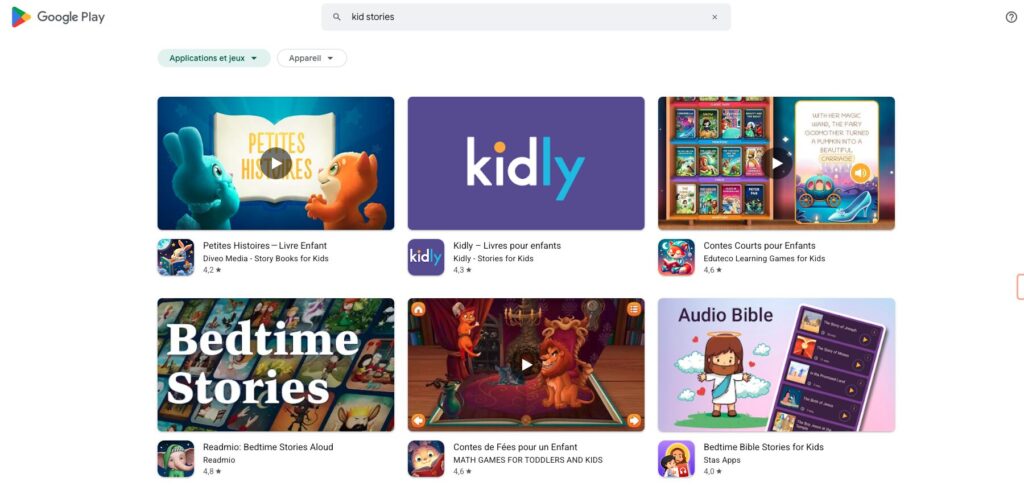Picture this: it’s the end of a long day, and you’re settling in with your child for a calming routine. You reach for a book, ready to share a tale that will help them drift off peacefully. But have you ever wondered how much time you should spend reading to ensure they get the best rest?
A bedtime story is more than just a tradition; it’s a powerful tool to help both kids and adults unwind. For children, it’s a moment of connection and relaxation. For adults, it’s a chance to escape the stresses of the day and find calm. In fact, recent surveys show that more adults are turning to storytelling apps like Calm and Moshi to ease their minds.
Finding the right balance between engaging content and brevity is key. Too short, and it might not fully relax them. Too long, and it could keep them awake. Let’s explore how to craft the perfect story to promote restful sleep for everyone.
Understanding the Role of Bedtime Stories in Sleep
As the day winds down, sharing a story can be a soothing ritual for both you and your child. This simple act does more than entertain—it helps ease the transition to sleep, creating a sense of calm and connection. Whether it’s a classic fairy tale or a modern digital narrative, the benefits are universal.
Benefits for Children and Adults
For children, bedtime stories are a cornerstone of relaxation. They provide a safe space to unwind, reducing anxiety and stress. Studies show that interactive storytelling can boost vocabulary and strengthen parent-child bonds. It’s not just about the words—it’s about the shared experience.
Adults, too, can find solace in storytelling. After a long day of work, reading aloud or listening to a tale can help you disconnect from daily pressures. Apps like Calm and Moshi have made it easier for adults to incorporate this tradition into their routines, promoting better sleep quality.
Why Stories Matter in Winding Down
Stories with familiar themes, like Goldilocks and the Three Bears, offer comfort and routine. They engage the mind without overstimulating it, making them perfect for winding down. Gentle, soothing language further enhances this effect, helping both children and adults relax.
Interactive elements, such as asking questions or using props, keep children engaged while maintaining a calming atmosphere. This balance is key to ensuring the story aids sleep rather than delaying it.
| Benefit | For Children | For Adults |
|---|---|---|
| Reduces Anxiety | Creates a safe space | Eases daily stress |
| Improves Sleep Quality | Promotes relaxation | Encourages better sleep |
| Strengthens Bonds | Enhances parent-child connection | Fosters shared experiences |
Establishing a regular bedtime routine that includes reading can make a world of difference. It’s not just about the story—it’s about the consistency and comfort it brings. Whether you’re reading to a child or listening to a tale yourself, this simple practice can transform the end of the day into a peaceful, restorative experience.
Exploring Reading Durations for Various Age Groups
Every parent knows that finding the right balance in storytelling can make all the difference. The time you spend reading to your child plays a crucial role in their ability to relax and fall asleep. Younger children, for instance, have shorter attention spans and thrive on brief yet engaging tales. As they grow older, their ability to focus increases, allowing for longer narratives.

Research shows that toddlers typically enjoy stories lasting around 5 to 10 minutes. These shorter stories keep them engaged without overwhelming their focus. For preschoolers, extending the reading time to 15 minutes can be beneficial. By the time they reach elementary school, children can comfortably enjoy stories that last up to 20 minutes.
Here’s a quick list of age-specific guidelines to help you tailor your storytelling:
- Toddlers (1-3 years): 5-10 minutes with simple, repetitive language.
- Preschoolers (3-5 years): 10-15 minutes with slightly more complex plots.
- Elementary-aged children (5-8 years): 15-20 minutes with engaging, longer narratives.
Consistency in duration is key. A predictable routine helps signal to your child that it’s time to wind down. Whether it’s a short board book for a toddler or a chapter from a longer story for an older child, the goal is to create a calming experience that prepares them for sleep.
“The right story length can transform bedtime into a peaceful, bonding moment.”
Adjusting the number of words or pages based on your child’s age ensures they remain engaged without feeling restless. For example, classics like Goodnight Moon (32 pages) are perfect for toddlers, while The Cat in the Hat (61 pages) suits older children. By understanding these differences, you can craft a bedtime routine that works for your family.
How to Determine the Ideal Bedtime Story Length
Finding the sweet spot for story time ensures better sleep. The right duration keeps your child engaged without overstimulating them. It’s all about balance—enough detail to captivate, but not so much that it delays sleep.
Factors Influencing Story Duration
Several factors play a role in deciding how long a story should be. Age is a big one. Younger children have shorter attention spans, so shorter tales work best. Older kids can handle more complex plots and longer narratives.
Attention span is another key point. A toddler might lose interest after 5 minutes, while a preschooler can stay focused for 10-15 minutes. The goal is to keep them engaged without pushing their limits.
Desired wind-down time also matters. If you’re aiming for a quick transition to sleep, a shorter book might be better. For a more relaxed routine, a longer story can set the tone.
Age-Appropriate Word Count Guidelines
Tailoring word count to your child’s age ensures they stay interested. Here’s a quick guide:
| Age Group | Word Count |
|---|---|
| Toddlers (1-3 years) | 500-700 words |
| Preschoolers (3-5 years) | 700-900 words |
| Elementary-aged (5-8 years) | 900-1,000 words |
These ranges provide enough detail to engage without overwhelming. For example, classics like Goodnight Moon (around 130 words) are perfect for toddlers. Longer books like The Cat in the Hat (around 1,600 words) suit older kids.
Feedback from your child is crucial. If they seem restless, try a shorter story. If they’re eager for more, gradually increase the number of words. Testing and adjusting over time helps you find the perfect fit.
“The right story length can make bedtime a peaceful, bonding moment.”
By considering these factors, you can create a routine that works for your family. Whether it’s a short board book or a chapter from a novel, the goal is to make bedtime a calming experience.
Elements of a Great Bedtime Routine
Creating a calming bedtime routine is more than just reading a book—it’s about setting the stage for restful sleep. By combining storytelling with other relaxing activities, you can make this time a cherished moment for your child and yourself.
Integrating Storytelling with Calming Activities
Start by pairing storytelling with activities that soothe the senses. Soft background music or gentle conversation can enhance the experience. For example, dim the lights and play calming sounds to create a peaceful atmosphere.
Interactive elements, like flipping through a picture book or using tactile props, keep your child engaged without overstimulating them. These small touches make the routine more enjoyable and effective.

Consistency is key. A predictable routine helps signal to your child that it’s time to wind down. Whether it’s reading a short book or listening to a chapter from a novel, the goal is to create a calming experience.
Here are some tips to enhance your routine:
- Set a specific time each night to begin winding down.
- Turn off screens at least one hour before bed to avoid blue light disruption.
- Incorporate familiar rituals, like brushing teeth or choosing pajamas, to build comfort.
“A well-balanced routine transforms bedtime into a peaceful, bonding moment.”
By integrating storytelling with these calming practices, you create a harmonious environment that reduces stress and anxiety. This approach not only helps your child relax but also improves their overall sleep quality.
Crafting Engaging Bedtime Stories for Effective Wind Down
Storytelling at night can be a magical way to connect with your child while helping them relax. The key is to create a tale that captivates without overstimulating. By blending interactive elements and literary devices, you can craft a story that gently escorts your little one into a peaceful night’s rest.
Using Interactive and Familiar Elements
Incorporating familiar characters and settings can make the story more relatable and comforting. For example, a tale about a lost puppy finding its way home can evoke empathy and warmth. Interactive elements, like asking your child to predict what happens next, keep them engaged without disrupting the calm.
Moreover, using props like stuffed animals or soft blankets can enhance the experience. These small touches create a sensory-rich environment that signals it’s time to wind down.
Employing Tone, Similes, and Personification
The tone of your voice plays a crucial role in setting the mood. A soft, soothing cadence helps your child relax. Literary devices like similes and personification add warmth and personality to the narrative. For instance, describing the moon as “a gentle guardian watching over the night” creates a calming image.
Here’s a quick guide to using these devices effectively:
| Device | Example |
|---|---|
| Simile | “The stars twinkled like tiny diamonds in the sky.” |
| Personification | “The wind whispered secrets to the trees.” |
| Onomatopoeia | “The leaves rustled softly in the breeze.” |
These techniques add depth to the story while maintaining a tranquil atmosphere.
“A well-crafted tale can transform bedtime into a cherished moment of calm and connection.”
Experiment with different methods to see what resonates with your child. Whether it’s a classic fairy tale or a modern adventure, the goal is to create a narrative that gently escorts them into sleep.
Tips for Transitioning from Daytime Activities to Bedtime
After a busy day, winding down can feel like a challenge for both you and your child. The key is to create a calm, predictable routine that signals it’s time to rest. With a few simple strategies, you can turn high-energy moments into peaceful evenings.
Setting a Peaceful Pre-Sleep Environment
Start by creating a soothing atmosphere. Dim the lights and play soft music to help your child relax. A quiet, clutter-free space can make a big difference in setting the mood for sleep.
Incorporate calming activities like reading or gentle stretching. These activities help your child shift from playtime to rest. Avoid stimulating games or screens at least 30 minutes before bed.
Here are some practical tips to ease the transition:
- Set a consistent time for winding down each night.
- Use a timer to signal the start of the routine.
- Encourage quiet play or drawing as a calming activity.
“A consistent routine helps your child feel secure and ready for sleep.”
If your child resists, stay patient and consistent. Small adjustments, like adding a favorite blanket or stuffed animal, can make the process smoother. Over time, these habits will become a natural part of their evening.
Managing Resistance and Adjusting Routines
It’s normal for children to resist bedtime, especially after an exciting day. Address their concerns with empathy and offer choices. For example, let them pick which pajamas to wear or which book to read.
Here’s a quick guide to handling common challenges:
| Challenge | Solution |
|---|---|
| Resistance to bedtime | Offer choices and stay consistent. |
| Difficulty calming down | Introduce quiet activities like coloring or listening to soft music. |
| Waking up during the night | Reassure them and gently guide them back to bed. |
Remember, every child is different. Observe their reactions and adjust the routine as needed. Small changes, like adding a few extra minutes of quiet time, can have a big impact.
By creating a calm, consistent routine, you’ll help your child transition smoothly from day to night. This not only improves their sleep but also strengthens your bond.
Adapting Bedtime Stories for Different Family Dynamics
In every family, bedtime routines look a little different, but they all share one thing in common: the need for flexibility. Whether you’re a single parent, part of a blended family, or managing multiple children, tailoring your storytelling approach ensures everyone feels included and relaxed.
Sharing Storytelling Roles Among Family Members
One of the best ways to make bedtime special is by involving everyone in the storytelling process. Rotating roles between parents, siblings, or even grandparents can create a sense of teamwork and connection. For example, one night, Dad might read a story, while the next, an older sibling takes the lead.
This approach not only lightens the load for caregivers but also allows each family member to bring their unique style to the routine. It’s a wonderful way to bond and share the joy of storytelling.
Balancing Diverse Listener Needs
When multiple children are involved, balancing their needs can be tricky. A toddler might prefer a short, simple tale, while an older child craves a more complex narrative. The key is to find stories that can engage both age groups without leaving anyone out.
One strategy is to choose books with layered storytelling—simple enough for younger kids but with deeper themes for older ones. Another option is to alternate nights, dedicating each evening to a specific child’s preferences.
“Flexibility and creativity are the cornerstones of a successful bedtime routine in diverse families.”
Here are some tips to make it work:
- Use props or visual aids to keep younger children engaged while older ones focus on the plot.
- Encourage older siblings to help tell the story, fostering a sense of responsibility.
- Rotate who chooses the bedtime story each night, ensuring everyone feels heard.
By adapting your approach, you can create a bedtime routine that works for your unique family dynamic. It’s all about finding what brings everyone together and makes the end of the day a peaceful, shared experience.
Conclusion
As the evening unfolds, crafting the perfect tale can transform bedtime into a cherished moment. A well-crafted story helps your child transition smoothly to sleep, creating a sense of calm and connection. Tailoring the time spent reading to their age and needs ensures they stay engaged without feeling restless.
Remember, there’s no one-size-fits-all approach. Experiment with different durations and interactive elements to find what works best for your family. Whether it’s a short, simple tale or a longer narrative, the goal is to create a routine that feels natural and comforting.
Each night is an opportunity to strengthen your bond and improve sleep quality. With practice and understanding, storytelling can become a cherished part of your family’s evening. Share your experiences and adjustments—every family’s journey is unique.
FAQ
How long should a bedtime story be for optimal sleep?
The duration depends on the child’s age and attention span. For younger kids, 5-10 minutes works well, while older children may enjoy 15-20 minutes. The key is to keep it engaging yet calming.
Why are bedtime stories important for winding down?
Stories help create a peaceful transition from daytime activities to sleep. They reduce stress, stimulate imagination, and establish a comforting routine that signals it’s time to rest.
How do I choose the right story length for my child’s age?
Younger children, like toddlers, prefer shorter tales with simple plots. School-aged kids can handle longer narratives. Pay attention to their focus and adjust accordingly.
What factors influence the ideal story duration?
Consider your child’s energy level, the time available, and their engagement. A calm child might enjoy a longer story, while a tired one may need something brief.
How can I make bedtime stories more engaging?
Use interactive elements like asking questions, incorporating familiar characters, or adding expressive tones. This keeps your child interested and helps them relax.
Can adults benefit from bedtime stories too?
Absolutely! Reading or listening to a story can help adults unwind, reduce stress, and improve sleep quality. It’s a soothing practice for all ages.
How do I balance storytelling with other bedtime activities?
Integrate stories into a calming routine that includes brushing teeth, dimming lights, and soft music. This creates a seamless transition to sleep.
What if my family has different preferences for story length?
Rotate storytelling roles or alternate between shorter and longer tales. This ensures everyone’s needs are met while maintaining a peaceful atmosphere.




